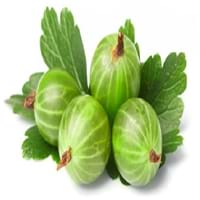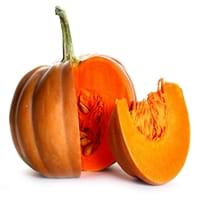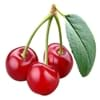Health Benefits
Arthritis prevention, Cancer prevention, Liver health, Scurvy treatment, Ulcer prevention
Arthritis treatment, Cancer prevention, High Cholesterol Regulation, Lower blood pressure, Helps Prevent cataract, Prevents gall stones, Ulcer treatment, Weight loss properties
General Benefits
Boosts immune system, Digestive aid, Eye care, Fights against infections, Improves blood circulation, Maintains healthy cholesterol level, Sore throat treatment, Treatment of common cold
Boosts respiratory health, Eliminate parasites and infections, Protects against birth defects, Strengthens bones
Skin Benefits
Anti-aging benefits, Brightens and lightens complexion, Reduces wrinkles, Treatment of acne
Heals sunburn, Hydrates skin, Skin rejuvenation
Hair Benefits
Prevents hair loss, Promotes longer and healthier hair, Treatment of dandruff
Regulates hair growth
Allergy Symptoms
Constipation, Diarrhea, Drop in blood pressure, Eczema, Facial swelling, Hives, Hoarseness, Itching, Itchy eyes, Nausea, Red rash, Redness of eyes, Runny nose, Sore eyes, Swelling of mouth, tongue or lips, Tingling sensation in mouth, Vomiting
Abdominal cramps, Anaphylaxis, Digestive Problems, Dizziness, Eczema, Fainting, Hives, Inflammation, Itching, Tingling sensation in wrist and face, Vomiting, Wheezing
Side Effects
Gastric irritation
Kidney and gallbladder diseases
Best Time to Eat
Best if taken as a breakfast (or empty stomach), As a snack in the late afternoon, Don't consume at night and before bed, Morning time (before lunch)
Along with meal, Don't eat after meal, Morning time (before lunch)
Vitamin B5 (Pantothenic Acid)
Vitamin C (Ascorbic Acid)
Vitamin K (Phyllochinone)
Not Available
Lutein+Zeaxanthin
Not Available
Calories in Fresh Fruit with Peel
Calories in Fresh Fruit without Peel
Not Available
Calories in Frozen Form
Not Available
Not Available
Calories in Dried Form
Not Available
Not Available
Type
Berry, Tree fruit
Berry
Season
Summer
All seasons
Varieties
Whinham's Industry, Green Hansa, Clark, Chataqua, Invicta, Keepsake, Lepaa Red, May Duke and Whitesmith
Jarrahdale, Peanut, Lakota, Cow, Sugar, Caribean, Red kuri, Buttercup and Pink lady
Color
Green, Purple, Red, Yellow
Blue, Green, Orange, Red, White
Inside Color
Yellowish Green
Creamy Yellow
Taste
Astringent
Creamy, Soft, Sweet
Origin
Africa, Europe, South-West Asia
Mexico
Soil Type
Loamy, Well-drained
Clay loam, Sandy loam, Well-drained
Climatic Conditions
Dry, Warm
Warm to hot climate
Facts about
- Traditionally, kids were told that babies were found under gooseberry bushes.
- They are also called 'fayberries' due to an ancient belief that fairies hid in gooseberry bushes to avoid danger.
- The name pumpkin has its roots in the Greek word ‘pepon’, meaning ‘large melon’.
- The largest pumpkin ever grown weighed 1,140 pounds.
- Pumpkins were once known for removing freckles & curing snake bites.
Top Producer
Germany
China
Other Countries
Austria, Czech Republic, Denmark, Hungary, Lithuania, Poland, Russia, Ukraine, United Kingdom
Egypt, India, Indonesia, Iran, Italy, Mexico, Russia, Spain, United States of America
Top Importer
Not Available
United States of America
Top Exporter
Not Available
China
Botanical Name
Ribes uva-crispa
Cucurbita maxima
Synonym
Ribes grossularia
Cucurbita pepo, Squash
Subkingdom
Tracheobionta
Tracheobionta
Division
Magnoliophyta
Magnoliophyta
Class
Magnoliopsida
Magnoliopsida
Subclass
Dillenhidae
Dillenhidae
Order
Saxifragales
Cucurbitales
Family
Grossulariaceae
Cucurbitaceae
Species
R. uva-crispa
Cucurbita mixta
Generic Group
Saxifrage
Not Available
Difference Between Gooseberry and Pumpkin
We might think that Gooseberry and Pumpkin are similar with respect to nutritional value and health benefits. But the nutrient content of both fruits is different. Gooseberry and Pumpkin Facts such as their taste, shape, color, and size are also distinct. The difference between Gooseberry and Pumpkin is explained here.
The amount of calories in 100 gm of fresh Gooseberry and Pumpkin with peel is 44.00 kcal and 26.00 kcal and the amount of calories without peel is Not Available and 30.00 kcal respectively. Thus, Gooseberry and Pumpkin belong to and category.These fruits might or might not differ with respect to their scientific classification. The order of Gooseberry and Pumpkin is Saxifragales and Cucurbitales respectively. Gooseberry belongs to Grossulariaceae family and Pumpkin belongs to Cucurbitaceae family. Gooseberry belongs to Ribes genus of R. uva-crispa species and Pumpkin belongs to Cucurbita genus of Cucurbita mixta species. Beings plants, both fruits belong to Plantae Kingdom.









